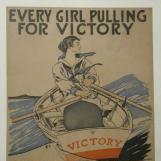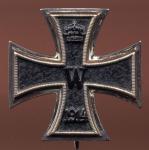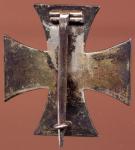-
Posts
3,687 -
Joined
-
Last visited
-
Days Won
2
Content Type
Profiles
Forums
Blogs
Gallery
Events
Store
Everything posted by Tony
-
Hello, I bought myself some very nice photos the other day (I think they?re nice anyway) and thought I?d show some here. Those that have writing on the back are addressed to Familie Weibrecht in F?rth and one is addressed to Uffz. Weibrecht. All unit stamps/addresses show Bavarian units but it looks like a couple are wearing Mecklenburg awards. They were probably taken from a photo album, the others (if there were others) now separated for ever. These ones show some awards and some scruffy uniforms. The first one is I think Uffz. Weibrecht, very dark but wearing a bright EKI The 2nd was sent to Uffz. Weibrecht on 24.12.15 from N?rnberg. Which awards are being worn by the bearded one? Tony
-
Hello Peter, I do like that, very nice indeed. I'm afraid I don't know anything about them but have seen similar at fairs in France or Belgium. Do the soldiers actually have the lion badge? Tony
-

EK 1914 What has happened to this core?
Tony replied to Tony's topic in Germany: All Eras: The Iron Cross
Joe, I was hoping you'd say it's a rare art deco variant designed by a famous German artist. Whoever did the paint job was very good. Tony -
Hello, I have a KO marked EKI here with a strangely pitted iron core. Does anyone have an idea why it looks like that? It doesn?t appear to be the standard KO core either and the pin is slightly longer than my other KOs. I?ve always thought it may have been badly rusted, cleaned and then repainted but the W, crown and 1914 don?t show any signs of oxidisation/pitting at all. Any opinions? Tony
-

WW1 and WW2 Commonwealth Groupings
Tony replied to a topic in Great Britain: Orders, Gallantry, Campaign Medals
Paul, I'm often told that I'm way out of touch with prices, in fact I can make a certain Dave B split his sides with laughter when talking values. If you like the minis and they don't crop up too often then there's no point inwaiting for a bargain, go for them. Tony (eagerly waiting for framed AG pics) -

WW1 and WW2 Commonwealth Groupings
Tony replied to a topic in Great Britain: Orders, Gallantry, Campaign Medals
Hello Paul, Don?t forget to show us a photo after it?s all been framed. I bet your Grandad could tell us some stories. My Grandad would only say that he hated it, he didn?t even have his medals issued. As for the Great War minis, well, I would think they'd cost about ?15. I'm only going by what I've paid for a trio (?11) and a trio with MC (?23). A lot of people don't like them because it's very easy to mix and match if you know what I mean. At least those ones look contemporary. No idea about the WWII group, engravings are always a little suspect in my opinion unless you can tell by the wear and grime that it wasn't done the other week and the medals mounted only days ago Tony -

Devonshire regiment
Tony replied to Igor Ostapenko's topic in Great Britain: Orders, Gallantry, Campaign Medals
Another fantastic group Igor. Do you not have his Star? Tony -

Royal Horse Artillery
Tony replied to Igor Ostapenko's topic in Great Britain: Orders, Gallantry, Campaign Medals
That's a nice group Igor and from someone who's been out since Mons. Have you checked his entitlement to the bar and rosettes? Where did you find it? Tony -

BRITISH ARMY WW1 SERVICE MEDALS
Tony replied to Kev in Deva's topic in Great Britain: Orders, Gallantry, Campaign Medals
Gordon was born in Egham, Surrey and was 8 years old at the time of the 1901 census. He was living at 172 Stroud St. Egham along with his 4 brothers and 3 sisters. Tony -

BRITISH ARMY WW1 SERVICE MEDALS
Tony replied to Kev in Deva's topic in Great Britain: Orders, Gallantry, Campaign Medals
I did 838 and a wild card and only came up with an infantryman. Any luck with Croucher? Tony -

BRITISH ARMY WW1 SERVICE MEDALS
Tony replied to Kev in Deva's topic in Great Britain: Orders, Gallantry, Campaign Medals
Michael, Please share your creativity with me Tony -

BRITISH ARMY WW1 SERVICE MEDALS
Tony replied to Kev in Deva's topic in Great Britain: Orders, Gallantry, Campaign Medals
You won't believe this but I've drawn a blank on each name. I couldn't find any names or numbers to match. Hopefully someone with a bit more experience can help you further, I'm stumped. Tony -

BRITISH ARMY WW1 SERVICE MEDALS
Tony replied to Kev in Deva's topic in Great Britain: Orders, Gallantry, Campaign Medals
Hello Kev, The BWM shouldn't swivel but it is silver. M2 is the prefix for electricians mechanical transport for the 1st to 4th new armies. ASC is Army Service Corps who were awarded the title 'Royal' for their work in the Great War and then ended up being the RCT and now the RLC. I'll have a check on the names and will get back to you later. Tony -

Can anyone help with this cemetery?
Tony replied to Michael Johnson's topic in The Great War 1914 to 1918
Michael, I have found this which is possibly from the French site you've already checked. I've also attached a photo of a German war time grave. I hope this may be of some help. Tony -

Princess Mary's Christmas Fund 1914
Tony replied to Mike's topic in Great Britain: Militaria: Badges, Uniforms & Equipment
Ken, Researching soldiers mentioned in dispatches, well I'm not sure if the Times newspaper will give you much info, the London Gazette will only mention his name so a researcher is probably your best bet if you can't get to Kew. What's his name and unit? You never know, someone might have the battalion diary. Tony -

Princess Mary's Christmas Fund 1914
Tony replied to Mike's topic in Great Britain: Militaria: Badges, Uniforms & Equipment
It's nice to have something like this actually named to a soldier, unfortunately only one of mine is named but the writing is too modern. Tony -
Joe, Here are two of mine. The flat copper cross has what I would call a standard type pin, so I'd guess at it being late war, maybe late 20s even whereas the convex brass (?) cross has a similar type of pin to your one. I'd agree with Dan that these were being produced into the 30s. Tony
-

British pair from SOS.
Tony replied to CRBeery's topic in Great Britain: Orders, Gallantry, Campaign Medals
I've found a Margaret Ann L Stephen from County Durham born in 1900 but that's all. Nice pair though. Tony -
1914 pattern fibre ID tag belonging to Pte. W. Beveridge, a Gallipoli casualty 2777 Pte. William Beveridge of the 7th Royal Scots entered theatre on 3.9.15; he was killed in action 13 days later on 16.9.15 at the age of 18 and is buried at the Redoubt Cemetery, Helles, Turkey. Born in Glimerton, Midlothian he was the son of Margaret Beveridge, of 24, Adams Row, Millerhill, Dalkeith, Scotland. Only one other member of the Royal Scots was killed that day, he was 1772 Pte. William George Smeaton Graigie of the 4th Royal Scots from Ann Terrace, Abbeyhill in Edinburgh, he was aged 21. A total of 606 ORs from the Royal Scots died as a result of operations in Gallipoli, of those men, 495 are listed as killed in action, 102 are listed as died of wounds and 9 died, probably from disease. We all know the campaign in Gallipoli was a bit of a disaster, mainly because the ability of the Turkish army was greatly underestimated and therefore thwarting a speedy conclusion. The only success at Gallipoli was the evacuation later in the year. The idea behind the Dardanelles campaign was that Germany would have to come to the assistance of the underrated Turkish army, this third front would leave either the German lines on the western or eastern fronts under strength, giving the allies a better chance to break through. February 19th 1915 The RN and French navy attacked Turkish positions in the Dardanelles. The naval attack wasn't a success and it was realised that military support was necessary. British and ANZAC troops already in Egypt were put on alert. The MEF contained 70,000 men from Britain, Australia and New Zealand as well as troops from France. The 29th Division would land on five small beaches at the southern end of the peninsula, the Anzacs would land further north just by Gaba Tepe and the French were to land at Kum Kale to protect the 29th Division. The Turks, now under the command of Otto Liman von Sanders had about 62,000 fighting troops. 25th April 1915 All went well for the British at 3 of their landing beaches at Cape Helles as they were unopposed, at another beach they defeated Turkish resistance but the fifth at Sedd-el-Bahr was a disaster. Turkish machine gunners were well dug-in and many British troops didn't even make it to the shore. The Anzacs were faced with steep cliffs to climb at Anzac Cove which, being a small beach, becoming quickly overcrowded. The Turks in this area were led by Colonel Mustafa Kemel (founder of the new Turkish State) who eventually managed to push back the Anzac advance. Lieutenant-General Sir William Birdwood who commanded the Anzacs asked for permission to withdraw his troops but this was refused. By May, the British had lost 20,000 men at Helles, between four and six thousand of them had been killed. The casualty clearing stations and medical services in general couldn't cope and as soon as trench warfare set in, the diseases that come with poor sanitary conditions, corpses, heat and flies quickly followed. 24th of May A cease fire was agreed allowing for the removal the masses of bodies from no mans land. An attack on Sulva Bay and the landing of 63,000 allied troops was ordered for 6th August only this time it was kept secret. The idea was to take the bay area and link up with the Anzacs at Anzac Cove. The Anzacs were having problems and couldn't break out of the cove, the British were pushed back by Mustafa Kemel who retook Sulva by the 10th of August. 3rd September 1915 William Beveridge of the 7th Royal Scots arrives at Gallipoli. 16th September 1915 his war is over, he was killed in action and is buried at Redoubt Cemetery, Helles. The evacuation of the peninsula was now being planned, Anzac Cove and Sulva Bay were successfully evacuated on the 19th and 20th of December 1915, Helles was successfully evacuated on the 8th and 9th of January. Losses from the Dardenelles Australia, killed 8,709, wounded 19,441, total 28,150 France (roughly), killed 10,000, wounded 17,000, total 27,000 Great Britain, killed 21,225, wounded 52,230, total 73,485 India ,killed 1,358, wounded 3,421, total 4,779 Newfoundland ,killed 49, wounded 93, total 142 New Zealand, killed 2,701, wounded 4,852, total 7,553 Allies total, killed 44,072, wounded 97,037, total 141,109 Turkey (roughly) killed 87,000, wounded 165,000, total 252,000 Redoubt cemetery William and George are buried in Redoubt cemetery was begun by the 2nd Australian Infantry Brigade in May 1915 and continued in use until the evacuation. It was greatly increased after the Armistice when the battlefields were cleared and graves were brought in from small cemeteries in the vicinity. There are now 2,027 servicemen of the Great War buried or commemorated in this cemetery. 1,393 of the burials are unidentified. Tony
-
It is now later and I've checked. There is 15 on the end of the handle so could it be from 1915? Anyhow, those with a quillion are earlier but I can't say if I've seen the white metal handle without a quillion. Tony
-
Chris, It's no good, I'll have it I think the quillions were removed in about 1915, my one has the brass handle without quillion. I quite sure it's dated 1916 or someone told me the quillion was removed after 1916, haven't brought it to work with me so am not 100% sure but will check later. Tony
-

Help Wanted
Tony replied to shako_uk's topic in Great Britain: Militaria: Badges, Uniforms & Equipment
I just read that the Druze came under French rule but that they also turned to the British and Jews for protection. Could it be that some fought with Vichy forces and others along side the British? Tony












